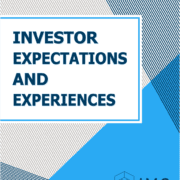Tech Adoption in CRE: Misconceptions and Reality
Technology is taking commercial real estate by storm and has the potential to change the long-established status quo. It can be easy to misinterpret what the implications of these changes might be, but let us put some of your fears to rest.
Read on as we clear up some common misconceptions and to better understand the potential impact of CRE tech in the industry.
Misconception 1: CRE Tech is Just a Fad
It’s understandable due to their rapid and rampant success that some would view CRE technology as merely a passing trend like the latest fad diet—something that will surely fade into obscurity once the buzz is over. But most of these tech companies are probably not going away. Rather, they are only gaining traction. Not only is technology implementation now considered more of a necessity rather than just a luxury, but also those who have not yet adopted tech may already be falling behind their competitors.
To better understand the lasting power of CRE tech, imagine the following scenario: You are in a foreign city, and you need to ask someone for directions. Do you ask the person who speaks your native language but does not necessarily know the area well, or do you ask the person who appears to be a local but primarily speaks a language you are unfamiliar with? Both individuals can communicate with you enough to get you to your destination, but one will likely get you there in half the time and one will be able to share directions with half the effort. Now what if you could ask a local resident who is fluent in your language?
This is how a new generation of investors approaches technology. They’re expecting you to speak their language and to give them clear and useful data exactly when they ask for it. If you have not yet adopted CRE tech solutions, you may be able to offer the same information as your more forward-thinking industry peers, but you won’t necessarily attract investors at the same rate as your competitors. Modern investors have high expectations and know that they have options. Meet them on their terms to grow your investor base and secure more capital.
Misconception 2: Technology is a Threat to Organic Relationships
The commercial real estate industry has long established trust through personal connections and face-to-face interactions. That doesn’t mean, though, that the same methods will yield the same results. As an increasing number of Millennials enter the investing landscape, what they value is often different from their predecessors. The modern-day investor wants access to information, the ability to make data-driven decisions, and to rely less on personal relationships.
Technology does, however, play an increasingly critical in driving investor retention, which still relies on trust and communication between the sponsor and investor. With CRE tech such as investor management software, sponsors can provide investors with transparency and accessibility. This open exchange of information and real-time, on-demand insights solidifies the relationship between sponsor and investor, leading to higher retention rates and more repeat capital.
Whether you’re concerned that the CRE industry is losing its personal touch or believe that technology will never hold the same power as a handshake, the data says otherwise. Rest assured, though, that industry-specific tech adoption will drive profit and add value.
Misconception 3: Technology Will Replace Talent
Talent acquisition and retention are the backbone of your business, but are people really necessary as more processes become automated? The answer is yes! CRE tech is an aid, not necessarily a replacement. While technology is a tool that can dramatically improve productivity, humans are the processors that put the data to work. Automating back-office tasks frees up your staff to accomplish more value-add activities.
The value of human capital lies in our ability to think critically and creatively. Deanna Farnell, CFO of CGI Strategies, says “You want out-of-the-box thinkers and innovators — people who know how to utilize and embrace technology solutions. People who are working smarter and not harder.” The key to success is investing in talent and technology in tandem and measuring the two by different criteria. Avoid putting people to work on repetitive or manual tasks and emphasize the value of creative and critical thinking.
Even as artificial intelligence gains popularity, technology does not pose a threat to the need for human talent. The World Economic Forum reported that automation and AI could actually create 58 million net jobs by 2022. Technology implementation is part of workplace evolution that will ultimately create an office that is more efficient, productive, and profitable. Over 40% of Millennials say they would leave a company if they found the technology to be inadequate, so supplying your team with the tools for success is vital to employee retention.
Charles Kettering is quoted as saying “The world hates change, yet it is the only thing that has brought progress.” Frame these changes as progress to reap the benefits of a new era in CRE that values data-driven solutions and human creativity.
To learn more, download our free checklist: Building a Business Case for CRE Technology











